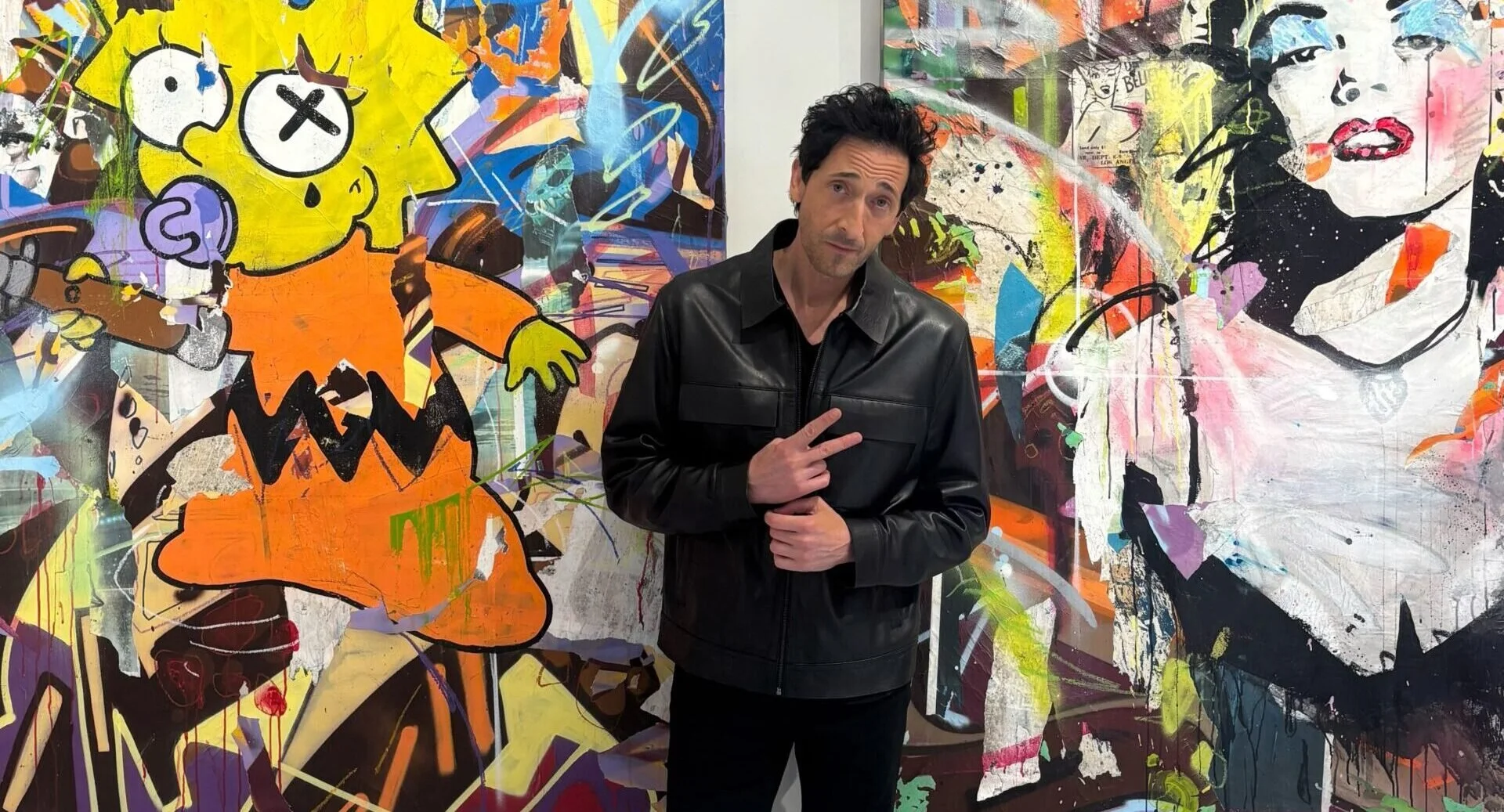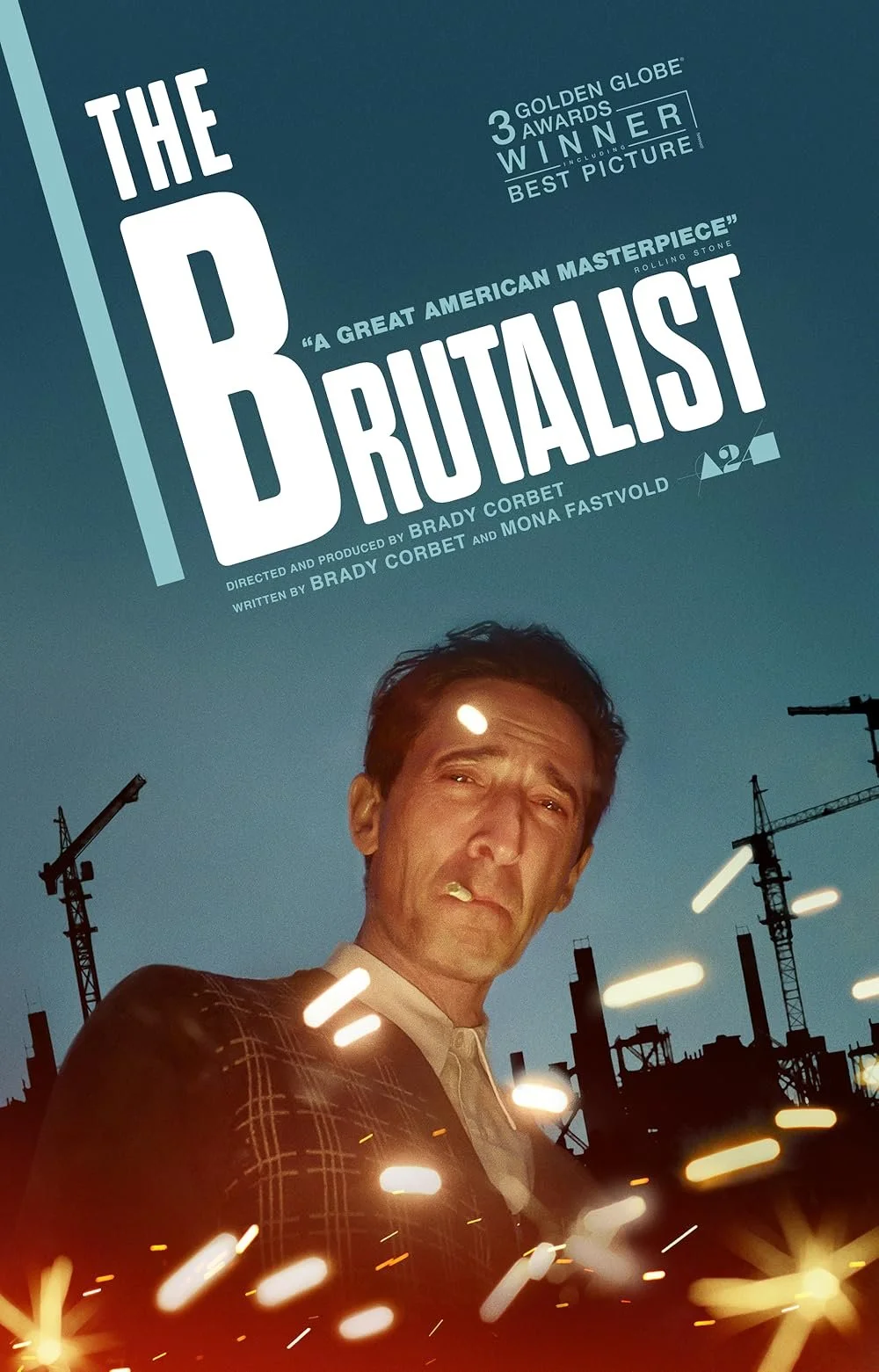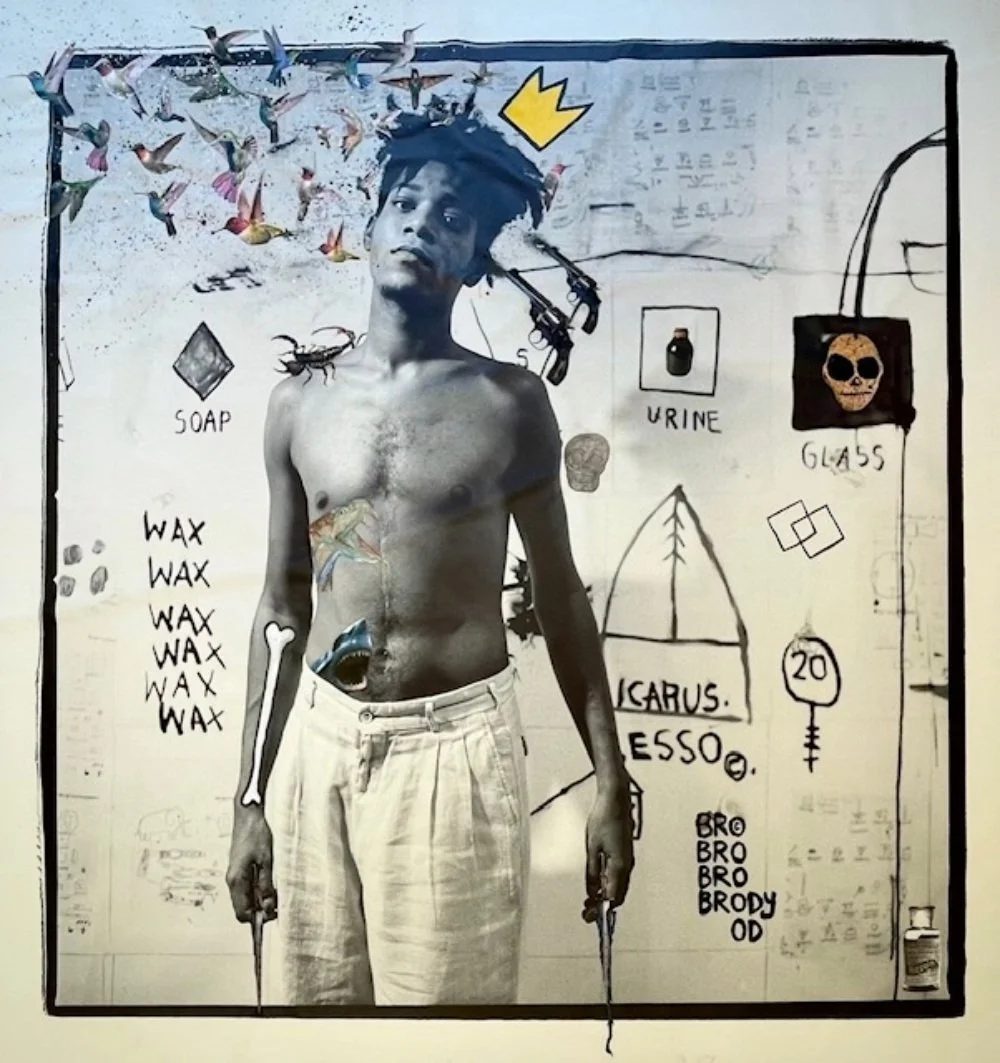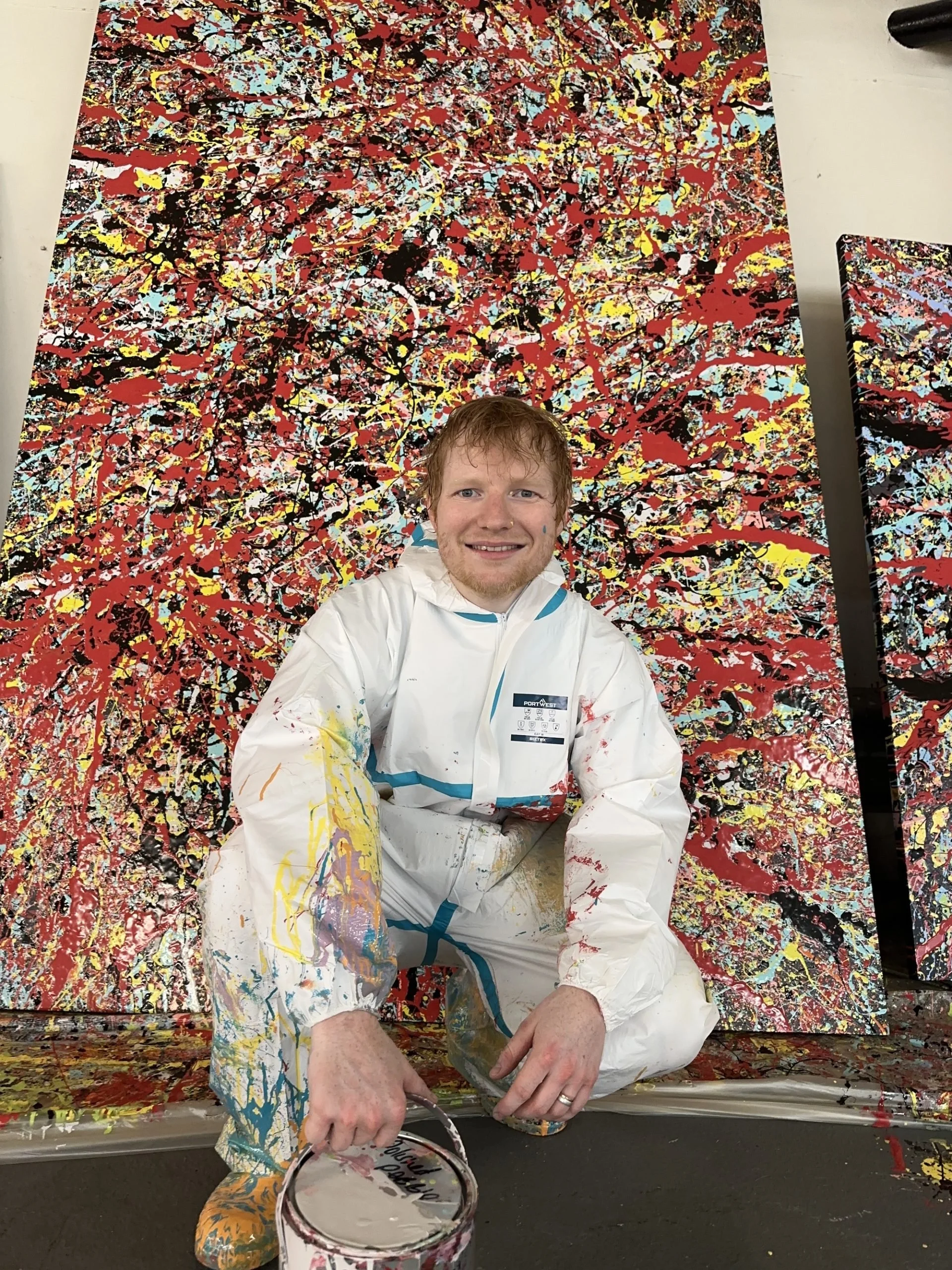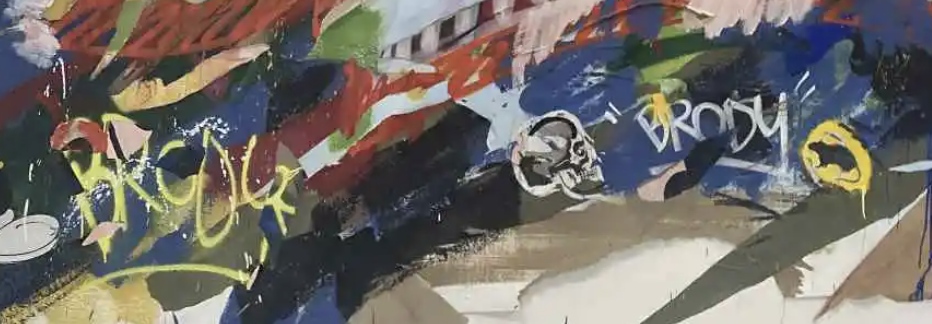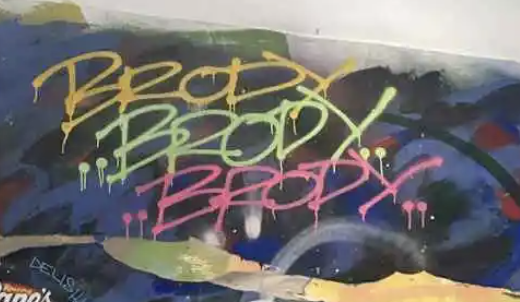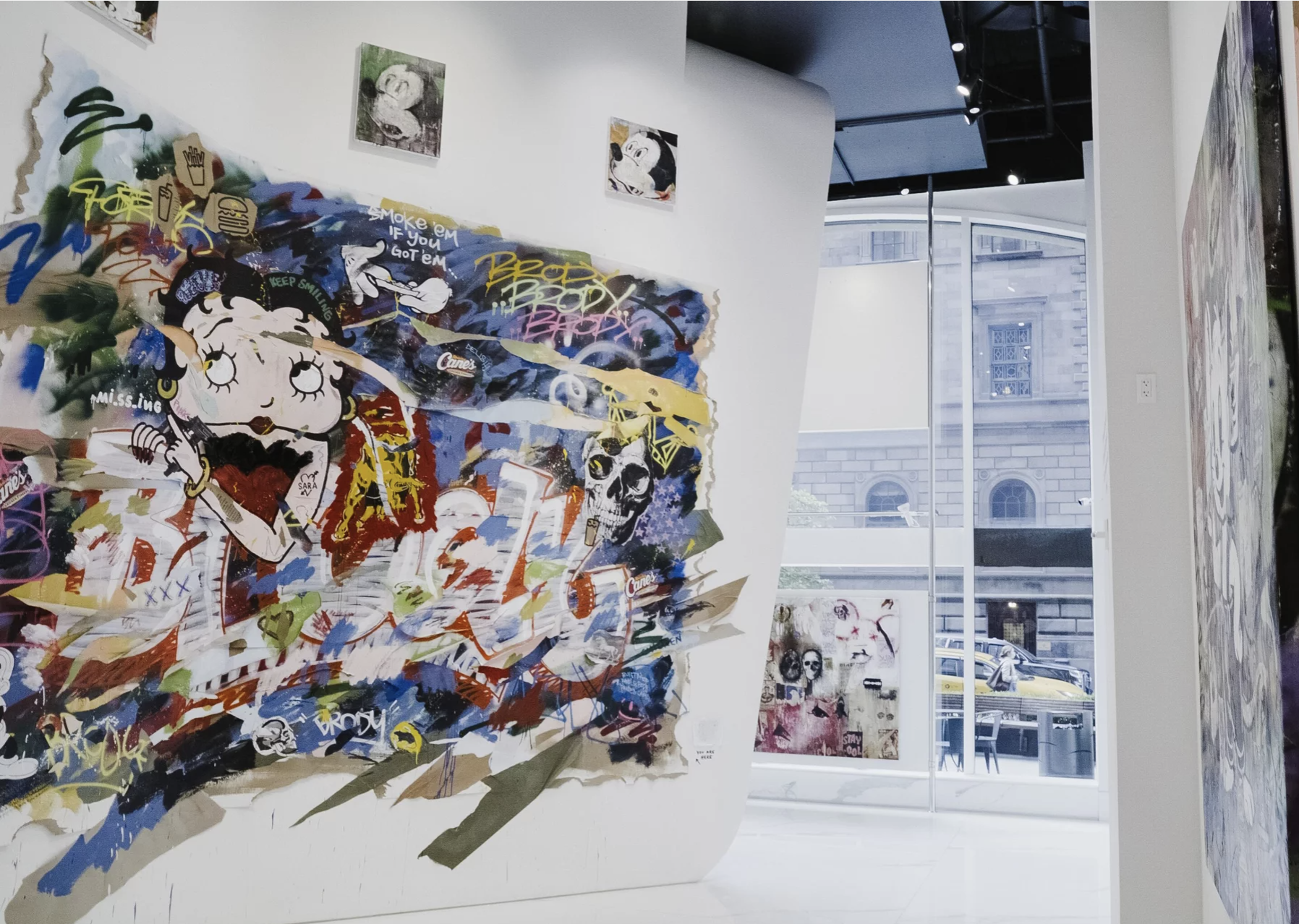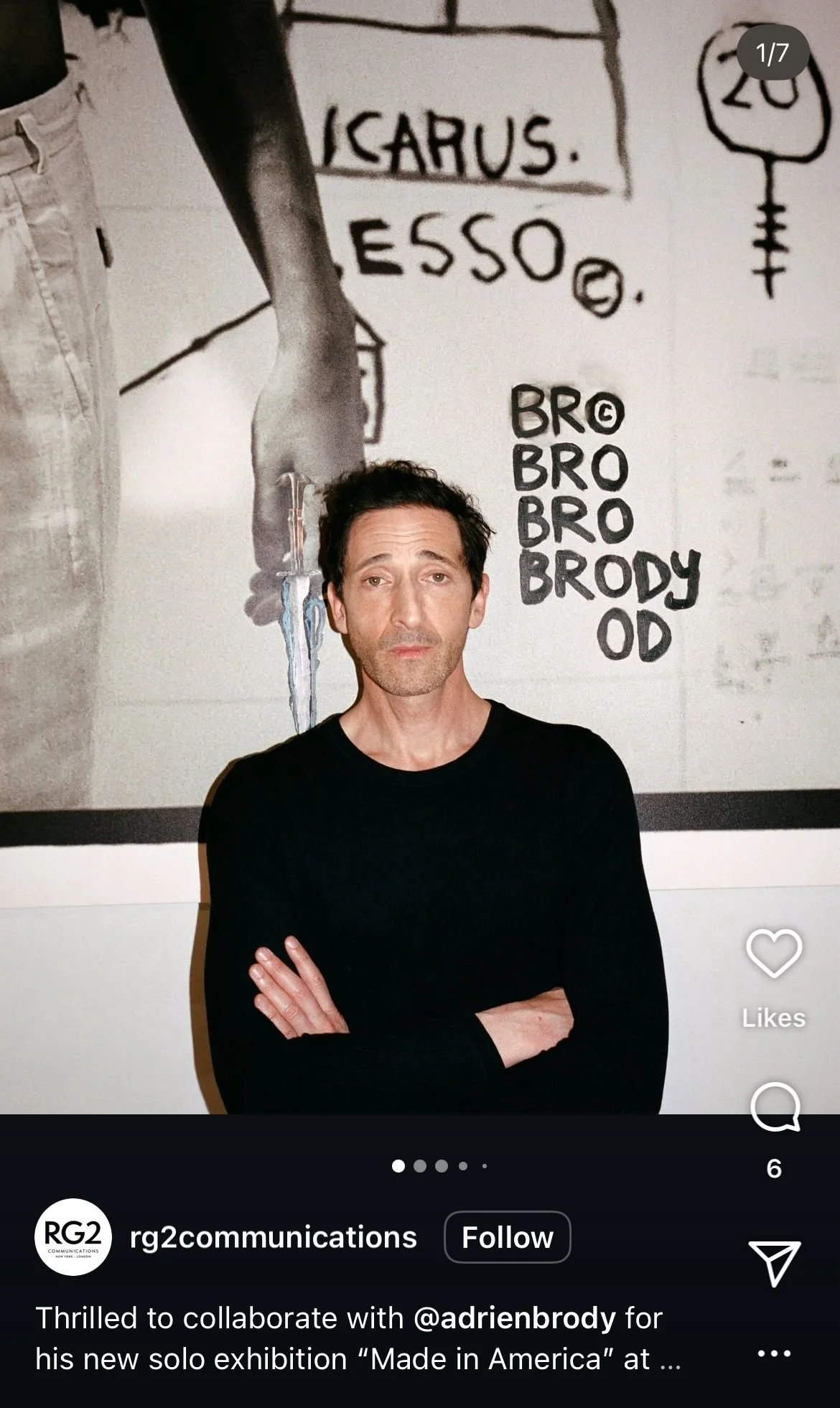Are Famous People Okay? A Closer Look at Celebrity Art
Celebrity art wouldn’t be so bad if the art world wasn’t pretending it’s serious.
I was doomscrolling Instagram in bed one morning—indulging the healthy modern ritual of starting the day with other people’s lives—when I landed on a photo of pluri-awarded actor Adrien Brody standing in front of what looked like a car-sized scrapbook, the result of Warhol, Basquiat, and Banksy being violently regurgitated onto a canvas.
Brody has said in interviews that while his acting performances are tempered by the filter of a director, producers, and editors, painting is where he finally has full creative agency. Good for him—less so for us. He clearly knows how to lose himself in a role. Judging by his art, he hasn’t quite made it back from the last one. I’ll spare you the obvious brutalism pun.
BRODY BRODY BRODY: A meta-discourse
The actor’s works are a cacophony of spray paint, cardboard, and American pop culture icons, mostly fictional or dead—thank God—and therefore spared the pain of seeing this. Bless Mickey Mouse.
Floating above Lisa Simpson or Betty Boop, he adds slogans like “Rise Above,” “VIOLENCE,” or simply “BRODY” (a lot of BRODY, actually). It’s like teenage angst met second-wave street art, then got crowned by the ego of someone who’s had a standing ovation at Cannes. Can’t say the hints weren’t there.
My favourite piece, seemingly a tribute to Basquiat, is especially hysterical. Among the layers of chaos, the word “BRO” is stencilled four times in a descending column, leading into “BRODY,” and finally, “OD.” Yes. “BRO-BRO-BRODY-OD.” Subtle.
Elsewhere, he scribbles “Heroin” next to a Basquiat crown—perhaps a poetic nod to the young artist’s overdose, just in case we couldn’t draw the connection ourselves. Brody is not one for metaphors. In another piece (now lost to video interviews and quietly scrubbed from the internet), he plasters a hazard symbol over a field of McDonald’s logos. A profound commentary on... America being toxic? Fat? McDonald’s not replacing their frying oil often enough? You decide.
Not just Ed Sheeran’s splatter tantrum
But Brody isn’t alone. Everyone who’s ever been on Jimmy Fallon seems to be finding their truth in front of a canvas. Ed Sheeran is splashing paint in a disused car park in London Soho. Hunter Biden has sold abstract works for up to $500,000. Lucy Liu has had museum exhibitions. Paris Hilton is collaborating with AI to make candy-coloured NFT fever dreams. Brad Pitt has a ceramics studio now (of course he does).
Most explain this pivot with some variation of “I just needed another creative outlet.” Painting becomes a wildcard for soul-searching, self-healing, redemption, or just vaguely rebranding.
At least Sheeran’s honest about it. He reportedly blasts music in his studio while throwing paint around, calling it “visual representations of songs.” Maybe this is how we find out he has synaesthesia. Still, he doesn’t sell his Pollock-y splatters commercially—only for charity—which, honestly, earns him a pass. No tortured-artist narrative. No performative press tour. Just chaos and Viva La Vida by Coldplay. That’s how I like to picture Ed.
Lucy Liu, meanwhile, is the black sheep of this bunch. Her art practice spans photography, abstraction, and installation. She’s exhibited internationally, and her work is refreshingly low-drama. If anything, she seems like someone who would be an artist even if she weren’t famous.
Then there’s the rest. Hunter Biden’s hazy abstracts resemble the art you find in a very expensive Austrian gut-reset centre. Paris Hilton’s pastel NFTs exist in a pink-tinted parallel universe and seem to—okay, let’s just move on.
Look, I don’t have a problem with famous people painting. The world is full of hobbyists in sheds and converted garages. The issue is when those hobbyist canvases get chauffeured into the art world like they’ve just solved the Middle East peace—accompanied by speculative press releases, inflated price tags, and enough art-speak to give me a migraine.
Beyond the works themselves—which I ended up finding quite entertaining (in the same way one might enjoy reality TV on a transatlantic flight: detached, mildly ashamed, but fully amused)—celebrity art exposes something grim. If visibility and media access are enough to legitimise even the most derivative manic collage, then the threshold for “serious art” isn’t rigour, originality, or even talent. It’s recognisability.
So, are famous people okay? Maybe. But the real question is: are we?
We’re dropping six figures on a stencilled rat in “Brody Brody” shoe soles. Honestly, we’re the ones who need rehab.
